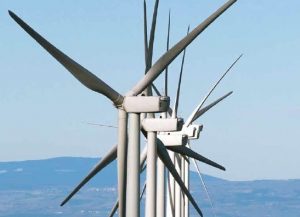The first offshore turbines arrived off the coast of New England last year in the form of a $300 million utility-scale scheme called Block Island. Now, new projects are starting to follow suit and the U.S. Offshore Wind Industry is starting to gather pace.
There is every reason to believe the U.S. will follow the same course as Europe and embrace offshore wind as part of a wider drive to decarbonize electricity generation. For example, the Commonwealth of Massachusetts has enacted a law that requires its utilities to buy 1.6 GW of their energy from offshore sources by 2027.
Now key stakeholders (governments, developers, banks, private financiers) are trying to decide how much and when to invest, the best partners to pick for a project’s specific requirements, and which suppliers are needed to deliver these projects on time and within budget.
Key barriers to entry include how the energy policy under the Trump administration will evolve in the next four years, the existing rules in individual states and how they may develop, the relative competitiveness of offshore against fossil, nuclear, and alternative forms of renewables, and what development is expected on the engineering and technology side of things.
The leading players in the North American Offshore Wind sector will gather in New York in May to chart a course for a sector that is fast becoming part of the United States’ future energy mix.
The U.S. Offshore Wind 2017 conference and exhibition, at the Long Island Hyatt Regency May 8-9, aims to pool the industry’s experience and expertise to enable boards to make informed choices when drawing up their business strategies. The speakers will include senior executives from many of the European and U.S. companies that have created the modern offshore industry, such as Dong Energy, which has built more offshore wind farms than any other developer; giants such as E.ON and Iberdrola; integrated energy companies such as Statoil; and US developers, such as U.S. Wind, Vineyard Wind, and LEEDCo.
The conference provides a guide to everything needed to run a winning project, each session led by one of the industries’ main players.
“The second annual U.S. Offshore Wind Conference brings together the top leadership of the offshore wind industry in a unique format and with an exciting agenda, which hits the sweet spot of the challenges facing the sector: permitting, market development, reducing cost of energy, and financing projects in the U.S.,” said Paul M Rich, director of project development for U.S. Wind. “Come meet the champions of the offshore wind industry, roll up your sleeves and engage in an action-packed event.”
Questions expected to be addressed include:
- How big will the market become, and how quickly will it happen?
- Where are the best places to site a project with an eye on the existing infrastructure and supply base, not to mention the political and regulatory environment (focus on New York State, Massachusetts, and California)?
- What are the ways to overcome the many regulatory hurdles a developer faces, including the best way to obtain permits and grid connections
- What is the best way to minimize costs and maximize margins, and how was lower LCOE accomplished in Europe?
- How to build a wind farm in the U.S.; everything from setting up a logistics hub and designing foundations to choosing the right turbine and navigating the Jones Act.
- What will operations and maintenance strategies look like for developments in the Atlantic, Gulf, Pacific, Great Lakes, and Hawaii?
- What lessons can be learned from European wind companies, and how can this knowledge be transferred to the U.S.?
Source: Adam Minkley, Wind Energy Update
For more information, go to www.windenergyupdate.com/offshore-usa or contact Minkley at adam@WindEnergyUpdate.com

























